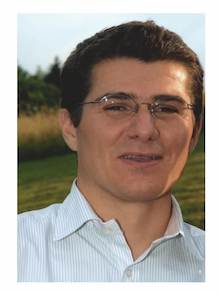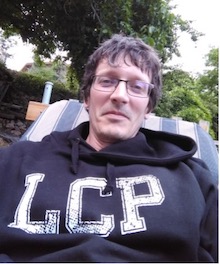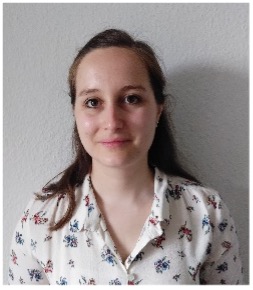|
|
|
Lectures
Course: Basics and advanced structure & properties relationships in the rational design of high-performance fluorescent organic dyes and related reaction-based fluorogenic probesMolecular engineering approaches towards ideal fluorescent organic dyes for sensing and bioimaging, will be presented. The emphasis will be placed on both conventional and emerging strategies for fine-tuning photophysical properties (spectral features, brightness, issue of photostability, ...), water solubility, bioconjugation ability and fluorogenic reactivity. From fluorescent organic dyes to "smart" fluorescent probes. A brief overview of molecular sensing approaches through recognition and reaction-based strategies. Design strategies and response modes will be briefly discussed and illustrated by selected examples of reaction-based fluorogenic probes (also known as fluorescent chemodosimeters). Keywords: chemistry and photophysics of organic-based fluorophores (cyanine dyes and related hybrid structures, diketopyrropyrrole dyes, xanthene dyes); reaction-based fluorescent probes for analytical sensing; optical bioimaging and small-molecule-based theranostics Seminar: Novel molecular approaches in fluorogenic biodetection: "in situ" synthesis of fluorescent heterocycles and anion sensing through molecular disassemblyOver the past two decades, reaction-based fluorescent probes have emerged as valuable tools in the field of bioanalysis, and more recently in optical-based molecular imaging and theranostics. Rationally designed on the basis of well-known photophysical processes (FRET, ICT, PeT, ...) and fluorogenic reactions, they often enable detection of biologically relevant analytes with both a good sensitivity and spatial resolution, in complex environmental or biological matrices[1]. In order to overcome some limitations of these photoactive molecular systems, and to extend their scope, pioneering works from the Anslyn and Yang groups, have highlighted a cutting-edge approach named "covalent-assembly" principle[2,3]. This novel class of fluorescent chemodosimeters are "caged" molecular precursors that can be readily converted "in situ" into fluorescent cores, through domino reactions, effective in biological media and triggered by the analyte to be detected. Our recent achievements in this field, focused on "in situ" formation of phenoxazine dyes[4], pyronin dyes[5] and fluorophores belonging to the family of quinoxalin-2(1H)-ones[6], will be presented. The emphasis will be put on both synthetic and analytical aspects. In order to achieve effective detection of ionic analytes bearing a poor chemical reactivity, a complementary and alternative approach based on metal displacement and molecular disassembly processes ("covalent-disassembly fluorescent probes) recently proposed by the Zelder group[7], has also been explored. Our recent achievements dedicated to fluorogenic detection of biorelevant phosphates[8], will be disclosed. References: [1] For a selected review, see: J. Chan, S.C. Dodani, C.J. Chang, Nat. Chem. 2012, 4, 973-984. [2] (a) Q. Wu, E.V. Anslyn, J. Mater. Chem, 2005, 15, 2815-2819; (b) Y. Yang, S.K. Seidlits, M.M. Adams, V.M. Lynch, C.E. Schmidt, E.V. Anslyn, J.B. Shear, J. Am. Chem. Soc., 2010, 132, 13114-13116. [3] For reviews about "covalent-assembly" fluorescent probes, see: (a) X. Luo, L. Gu, X. Qian, Y. Yang, Chem. Commun. 2020, 56, 9067-9078; (b) X. Chen, Z. Huang, L. Huang, Q. Shen, N.-D. Yang, C. Pu, J. Shao, L. Li, C. Yu, W. Huang, RSC Adv. 2022, 12, 1393-1415. [4] S. Jenni, K. Renault, G. Dejouy, S. Debieu, M. Laly, A. Romieu, ChemPhotoChem 2022, 6, e202100268. [5] (a) S. Debieu, A. Romieu, Org. Biomol. Chem. 2017, 15, 2575-2584; (b) S. Debieu, A. Romieu, Tetrahedron Lett. 2018, 59, 1940-1944; (c) K. Renault, S. Debieu, J.-A. Richard, A. Romieu, Org. Biomol. Chem. 2019, 17, 8918-8932; (d) K. Renault, Y. Capello, S. Yao, S. Halila, A. Romieu, Chem. Asian J. 2023, in press (for the corresponding preprint, see https://doi.org/10.26434/chemrxiv-22023-26486mp). [6] G. Dejouy, K. Renault, Q. Bonnin, A. Chevalier, C. Michaudet, M. Picquet, I.E. Valverde, A. Romieu, Org. Lett. 2020, 22, 6494-6499. [7] (a) Kumari, N.; Zelder, F., Chem. Commun. 2015, 51, 17170-17173; (b) Kumari, N.; Huang, H.; Chao, H.; Gasser, G.; Zelder, F., ChemBioChem 2016, 17, 1211-1215; (c) Yadav, P.; Jakubaszek, M.; Spingler, B.; Goud, B.; Gasser, G.; Zelder, F., Chem. - Eur. J. 2020, 26, 5717-5723; (d) Yadav, P.; Zelder, F., Chimia 2020, 74, 252-256. [8] Hui, E. Y. L.; Tay, D. W. P.; Richard, J.-A.; Pohancenikova, Z.; Renault, K.; Romieu, A.; Lim, Y. H., Dyes Pigm. 2022, 207, 110708.
Antoine Pallandre Institut de Chimie Physique (ICP), UMR 800, Université Paris-SaclayCourse: Coupling microfluidic and microscopy to explore living matterSorting, quantify and identify biomolecules are not easy goals. Microfluidic is particularly suited for the integration of high performance instrumentation and their synchronization to perform complex experiments. The coding is essential to enslave all these instruments for analyzing biological fluids. The data treatment also requires coding and some mathematical correlation formula are the starting point of artificial intelligence. We will present microfluidic experiments and explain the associated computer codes. Keywords: Microfluidic, sorting,coding, AI and machine learning
Franck B. Riquet1,2,3 1Physique des Lasers Atomes et Molécules (PhLAM), UMR 8523 CNRS, Université de Lille
2Molecular Signaling and Cell Death Unit, Department of Biomedical Molecular Biology, Ghent University, Ghent, Belgium
3Molecular Signaling and Cell Death Unit, VIB Center for Inflammation Research, Ghent, Belgium.
Course: Quantitative imaging of cell chemistry with biosensors, FRET modalities (1& 2)Seminar: Encoding and decoding of biological signals towards cell fate regulation: ‘Case of ERK signaling dynamics in programmed cell death’The Death Dynamics Team investigates the encoding and decoding of biological signals in the context of cellular stress and regulation of cell fate decision via single cell dynamics. Specifically, the focus is on determining how signaling events are encoded and computed by the cell at the biochemical level in real-time and at the single living cell level. This is relevant to both cell-autonomous and cell-cell communication processes. To this aim, quantitative single live cell imaging approaches are used to study key signal transduction effectors patterns. In the last decade we have investigated the regulation of cell fate decision in cell survival, cell proliferation, cell death and inflammation paradigms. The signaling dynamics of the different effectors molecules such as proteins (kinases) and second messengers implicated in these cellular processes is monitored in real-time via existing/optimized or newly developed genetically encoded reporters and FRET-based biosensors in living cells and tissues. During this talk, I will share with you our journey towards investigating ERK signaling dynamics and how we decrypted a characteristic temporally shifted amplitude- and frequency-modulated (AM/FM) ERK1/2 activity profile in necroptosis versus apoptosis which could be associated with TNF and IL-6 gene expression increase during necroptosis. Sipieter F, Cappe B, Leray A, De Schutter E, Bridelance J, Hulpiau P, Van Camp G, Declercq W, Héliot L, Vincent P, Vandenabeele P, Riquet FB. Characteristic ERK1/2 signaling dynamics distinguishes necroptosis from apoptosis. iScience. 2021 Sep 2;24(9):103074. doi: 10.1016/j.isci.2021.103074.
François Marquier Laboratoire Lumière, Matière et Interfaces (LuMIn), ENS Paris-SaclayCourse: Single molecule tracking and applicationsSingle Particle Tracking (or SPT) gathers several techniques to spy on molecule dynamics at the nanoscale level: diffusion of molecules, protein motion on a membrane, intraneuronal transport mediated by molecular motors, blood flow… It involves high-end optical toolboxes for super-localization (nanometer scale) and temporal resolution, as well as good algorithms to analyze the datas. We will give an overview of the optical techniques used to perform SPT, from basics to real-time 3D setups, with regards to their performances and applications. Keywords: Biophotonics, Single-particle tracking, super-localization, intraneuronal transport Course: Electron microscopy and correlative imaging, perspectiveSeminar : Studyning virus-host interactions by cryo electron tomography
Keywords: Virus-host interactions, nucleocytoplasmic large DNA viruses, poxviruses, cryo electron microscopy, cellular tomography, structural virology Olivier Nüsse Institute for Physical Chemisty (ICP), University Paris-SaclayCourse : Biology from cells and tissues to biomoleculesCells are the basic building blocks of all living organisms. We will review the basic components and functions of eukaryotic and prokaryotic cells. They are surrounded by their plasma membrane, they contain genetic material and numerous biochemical pathways to grow, replicate and fulfil their vital functions. Cells contain lipids, polysaccharides, proteins and nucleic acids. Eucaryotic cells have organelles with dedicated functions. Cells communicate with other cells and their environment using signaling molecules and pathways that control cell function and growth. They may also form multicellular organisms with different cell types having dedicated roles. Quantification of cellular processes requires dedicates probes and appropriate instruments. Such probes for cellular identity and function need to operate at nm to mm scale in the time frame of ms to months.
|
| Online user: 2 | Privacy |

|






